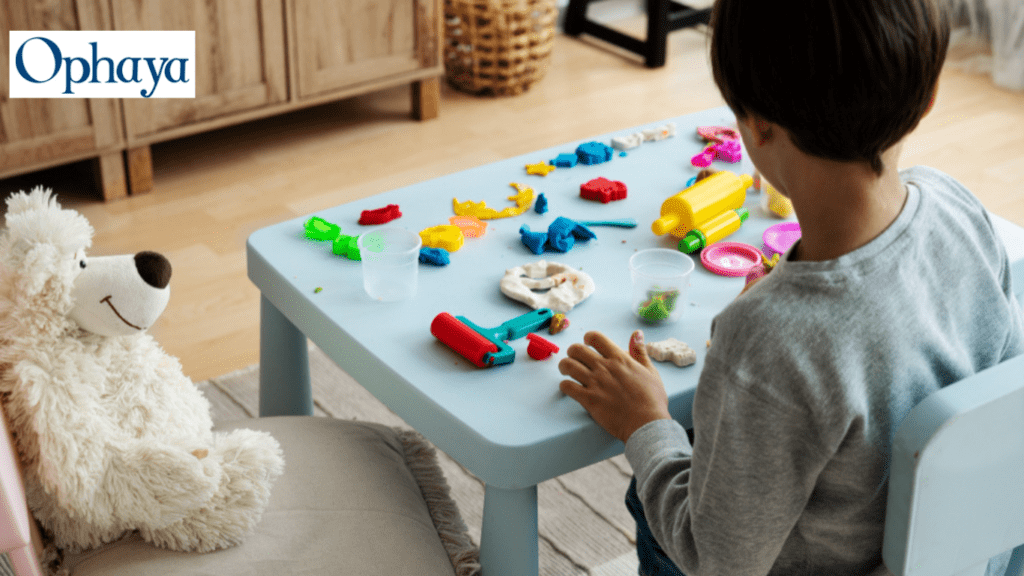As your little one grows and develops, finding the perfect toys to support their learning and development becomes a top priority. With so many options available, it can be overwhelming to choose the right Learning Toys for Three Year Old. That’s why we’ve put together this guide to help you navigate the world of learning toys and select the ones that will engage, inspire, and educate your child as they play. From building blocks to interactive games, we’ll cover everything you need to know to make sure your little learner is getting the most out of their playtime. Let’s dive in!
Introduction: The Importance of Learning Toys for Three Year Olds
Are you on the lookout for the perfect learning toys to spark your three-year-old’s curiosity and creativity? Look no further! Choosing the right toys for your little one is not just about fun – it’s also a fantastic way to aid their development and growth. Let’s dive into the world of learning toys together and discover how you can select the best ones for your child!
Understanding Your Child’s Developmental Milestones at Age Three
Understanding Your Child’s Developmental Milestones at Age Three can provide valuable insights into their growth and learning abilities. At this age, three-year-olds are typically curious and eager to explore the world around them. They may start showing more independence in tasks like dressing themselves or using the toilet.
Three-year-olds also begin to develop better language skills, expanding their vocabulary and ability to form more complex sentences. They may enjoy storytelling or engaging in simple conversations with others. Additionally, children at this age often show increased physical coordination and balance, allowing them to engage in activities that require more motor skills like running, jumping, or climbing.
Emotionally, three-year-olds may start displaying a wider range of feelings and understanding basic emotions like happiness, sadness, anger, or fear. It is important for parents to be supportive of their child’s emotional development during this crucial stage of growth.
Types of Learning Toys for Three Year Olds
When it comes to choosing learning toys for your three-year-old, there is a wide variety of options to consider. Educational toys are great for stimulating your child’s cognitive development and teaching them new skills. These can include alphabet puzzles, counting games, or interactive books that make learning fun.
Sensory and fine motor skill toys are also essential at this age. Toys like playdough, building blocks, or sorting shapes help enhance your child’s hand-eye coordination and sensory exploration abilities.
Social and emotional development toys focus on helping children learn how to interact with others and understand their own feelings. Role-playing sets, dolls, or board games that encourage sharing and cooperation fall into this category.
Creative and imaginative play toys allow children to express themselves through art supplies, dress-up costumes, or pretend-play sets like kitchens or tool benches. These toys foster creativity and storytelling skills in young minds.
Remember to choose toys that are safe, durable, and age-appropriate for your child’s developmental stage when selecting the best learning tools for their growth journey!
Educational Toys
When it comes to choosing Learning Toys for Your Three Year Old, educational toys play a crucial role in their development. These toys are designed to stimulate your child’s cognitive abilities and help them learn new concepts while having fun.
Educational toys come in various forms such as puzzles, shape sorters, and alphabet games. These toys can enhance your child’s problem-solving skills, hand-eye coordination, and memory retention. Look for interactive features that engage your little one’s curiosity and imagination.
Choosing educational toys that align with your child’s interests can make learning more enjoyable for them. Whether they love animals, numbers, or colors, there is a wide range of options available to cater to their preferences.
By incorporating educational toys into your child’s playtime routine, you are not only keeping them entertained but also providing valuable opportunities for growth and development. So next time you’re shopping for toys, consider adding some educational ones to the mix!
Sensory and Fine Motor Skill Toys
Sensory and fine motor skill toys are essential for three-year-olds as they help develop their coordination and dexterity. These toys engage the senses, encouraging exploration and discovery through touch, sight, and sound. Activities like sorting shapes or threading beads can enhance hand-eye coordination and strengthen fine motor skills.
Look for toys that offer different textures to stimulate your child’s sense of touch. Items like playdough or textured balls provide a tactile experience while improving sensory processing. Toys with buttons, zippers, or laces can help refine your little one’s finger movements and grip strength.
Puzzles with chunky pieces or building blocks promote problem-solving skills and spatial awareness. Through play, children can learn how to manipulate objects with precision and accuracy. Sensory bins filled with rice or sand create opportunities for sensory exploration while refining hand muscles.
Choose toys that encourage manipulation and precise movements to support your child’s overall development during this critical stage of growth.
Social and Emotional Development Toys
When it comes to Social and Emotional Development Toys for three-year-olds, think about options that encourage interaction and understanding of feelings. Look for toys that promote sharing, taking turns, and empathy.
Board games like “Feelings Flashcards” or dolls with various facial expressions can help your child recognize and express emotions effectively. Role-play toys such as play kitchens or doctor kits can also enhance their social skills by encouraging teamwork and communication.
Building blocks or puzzles that require cooperation with others can foster a sense of belonging and collaboration in your little one. Additionally, storytelling props like puppets or dress-up costumes can stimulate creativity while exploring different emotions through imaginative play.
Choose toys that inspire positive social interactions and emotional growth in your child’s early years to help them develop essential life skills from a young age.
Creative and Imaginative Play Toys
Creative and imaginative play toys are essential for three-year-olds as they encourage creativity, problem-solving skills, and self-expression. These toys can range from dress-up costumes to building blocks, sparking your child’s imagination in various ways.
Toys that allow open-ended play, such as art supplies or pretend-play sets, enable children to explore different roles and scenarios independently. This type of play fosters cognitive development and enhances their storytelling abilities.
Look for toys that promote divergent thinking, like puzzles or musical instruments. These activities stimulate the brain by encouraging children to think outside the box and come up with unique solutions.
Engaging in creative play also helps children develop their communication skills as they interact with others during collaborative games or role-playing activities. Encouraging your little one’s imagination through play is a wonderful way to support their overall growth and development at this crucial age.
Factors to Consider When Choosing Learning Toys for Your Child
When choosing learning toys for your three-year-old, safety should be a top priority. Look for toys that are free of small parts that could pose a choking hazard and ensure they meet safety standards.
Durability is another key factor to consider. Three-year-olds can be rough on their toys, so opt for ones made from sturdy materials that can withstand playtime wear and tear.
Make sure the toys you choose are age-appropriate for your child’s developmental stage. Toys that are too advanced may frustrate them, while those that are too basic may bore them.
Consider your child’s interests and preferences when selecting learning toys. Choose items that align with their passions to keep them engaged and excited about learning through play.
By keeping these factors in mind, you can select the perfect learning toys to support your child’s growth and development at this critical age.
Safety
When choosing learning toys for your three-year-old, safety should be your top priority. You want to ensure that the toys you select are made from non-toxic materials and do not have any small parts that could pose a choking hazard. Look for toys that have been tested and approved by reputable organizations for safety standards.
Check for any sharp edges or points on the toy that could potentially cause harm to your child. It’s also important to consider whether the toy is age-appropriate in terms of complexity and potential risks. Always follow the manufacturer’s guidelines for proper use and maintenance of the toy to prevent accidents.
Taking the time to carefully assess the safety features of a learning toy before purchasing it will give you peace of mind knowing that your child can play and learn without unnecessary risks. Remember, keeping your little one safe while they explore, discover, and grow is key when selecting educational toys at this crucial age.
Durability
When choosing learning toys for your three-year-old, durability is a crucial factor to consider. Kids at this age are curious and energetic, often putting their toys through rigorous play. Look for toys made from strong materials that can withstand rough handling without breaking easily.
Opt for toys with sturdy construction that can endure repeated use over time. Check for any small parts or pieces that could potentially break off and pose a choking hazard. Choosing well-made toys ensures they will last longer and provide extended play value for your child.
Consider the quality of the materials used in the toy’s production. Higher-quality materials are more likely to hold up under the wear and tear of active play. Investing in durable learning toys not only saves you money in the long run but also ensures your child can enjoy them safely for an extended period.
Prioritize durability when selecting learning toys to ensure they can keep up with your little one’s boundless energy and enthusiasm for exploration!
Age Appropriateness
When choosing learning toys for your three-year-old, age appropriateness is crucial. Consider the complexity of the toy and whether it aligns with your child’s current developmental stage. Selecting toys that challenge them without overwhelming can foster growth and engagement. By keeping safety, durability, and age appropriateness in mind, you can ensure that the learning toys you choose will be both beneficial and enjoyable for your little one as they continue to explore and learn through play.
How learning toys help to build concepts?
Learning toys play a crucial role in the development of children, especially at the age of three. This is because three-year-olds are at a stage where they are rapidly learning and absorbing new information about the world around them. They are curious, imaginative, and have a natural desire to explore and discover new things. Therefore, it is important to choose the right learning toys for your child to support their cognitive, social, emotional, and physical development.
One of the main benefits of learning toys is that they help children build concepts. Concepts refer to mental representations or ideas formed through experiences and learning. These can include shapes, colors, numbers, letters, sizes, patterns, cause-and-effect relationships, etc. By engaging with different types of learning toys that focus on these concepts, children are able to develop a deeper understanding and mastery over them.
For example, building blocks or shape sorters allow children to physically manipulate objects while exploring shapes and sizes. This not only helps them recognize basic shapes but also understand how they can be put together or taken apart to create something new. Similarly, puzzles help children develop problem-solving skills as they figure out how each piece fits into the larger picture.
Learning toys also promote language development by introducing new vocabulary related to different concepts. For instance, playing with toy animals can introduce words like “lion,” “elephant,” “zebra,” etc., while playing with toy vehicles can introduce words like “car,” “truck,” “bus,” etc. As children engage in imaginative play with these toys by creating stories or scenarios using such vocabulary words; their understanding and use of language improve significantly.
Furthermore
Are learning toys affordable?
As parents, we want to provide our children with the best educational tools and toys to help them learn and develop. However, with so many options available on the market, it can be overwhelming and expensive to choose the right learning toys for our three-year-olds. This brings us to the question – are learning toys affordable?
The answer is yes, learning toys can be affordable if you know what to look for and where to shop. Here are some tips that will help you find budget-friendly learning toys without compromising on quality.
1. Set a budget: The first step in finding affordable learning toys is setting a budget. This will help you narrow down your options and avoid overspending. Consider how much you are willing to spend on each toy or set a total budget for all of your child’s learning toys.
2. Look for multi-functional toys: Instead of buying different individual toys, look for ones that have multiple functions or activities in one. For example, building blocks not only encourage creativity but also teach basic math concepts such as counting and patterns.
3. Shop during sales or clearance periods: Keep an eye out for sales and clearance periods at toy stores or online retailers. You may be able to find great deals on high-quality learning toys during these times.
4. Consider second-hand options: Don’t underestimate the value of second-hand learning toys! Many parents sell their gently used educational toys at a fraction of the original price. You can often find these at garage sales, consignment stores, or online marketplaces like Facebook Marketplace or eBay.
Learning toys can be affordable if you have a budget in mind and are willing to do some research and creative thinking. Remember, the most important factor is not the price of the toy but how it engages and educates your child. With these tips in mind, you can find the perfect learning toys for your three-year-old without breaking the bank.


